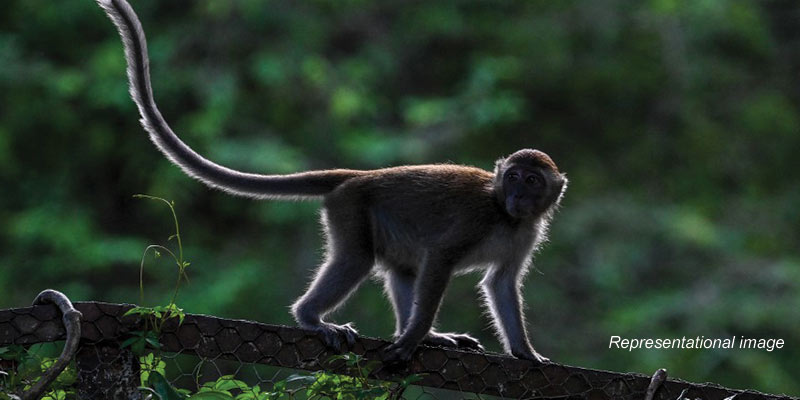Hong Kong Reports 1st Human Case of Monkey B Virus

Hong Kong recently recorded its first human case of B virus, also known as monkey B virus or herpes simiae virus. This viral infection, primarily transmitted through macaque monkeys, has raised concerns due to its potential severity if not treated promptly.
How Did The B Virus’s Human Transmission Take Place?
A 37-year-old man in Hong Kong was attacked by a monkey, leading to his infection with the B virus. The incident occurred during his visit to Kam Shan Country Park in late February. The man subsequently developed flu-like symptoms and was admitted to Yan Chai Hospital on March 21, where tests confirmed the presence of B virus in his cerebrospinal fluid. Presently, he is in critical condition and receiving treatment in the intensive care unit (ICU).
What is B Virus?
B virus is a type of Simplexvirus that infects macaque monkeys. While it causes cold sore-like symptoms in monkeys, its effects on humans can be severe, potentially leading to brain damage or death if not treated promptly. The virus is primarily found in the saliva, urine, and stool of macaques.
According to the US Centre for Disease Control and Prevention (CDC), B virus infections are very rare but it can lead to severe brain damage or death, if treatment is not given on time.
Transmission and Symptoms
Human infections of B virus are rare and usually occur through bites, scratches, or contact with infected monkey fluids. Symptoms include fever, chills, muscle aches, fatigue, and headaches. Some individuals may develop blisters at the site of contact with the monkey. Symptoms typically start within one month of being exposed to B virus, but could appear in as little as three to seven days.
The first indications of B virus infection are typically flu-like symptoms: fever and chills, muscle ache, fatigue, headache.
Then, the infected person may develop small blisters in the wound or area on the body that had contact with the monkey. Other symptoms may include: Shortness of breath, nausea and vomiting, abdominal pain, hiccups. As the disease progresses, the virus spreads to and causes inflammation (swelling) of the brain and spinal cord.
The CDC has recorded 50 cases of human infection since 1932, when the virus was first identified. As many as 21 of those infected died.
Human infection has been reported earlier in the US, Canada, China and Japan, and were mainly caused by bites or scratches by monkeys.
Prevention and Treatment
Immediate washing and cleaning of wounds or areas exposed to monkey fluids are crucial to prevent B virus infection. Using soap, detergent, or iodine followed by thorough water rinsing can help reduce the risk. Seeking medical attention for appropriate treatment, which may include antiviral medications, is essential if exposure to the virus occurs.
Way Forward
The case in Hong Kong highlights the importance of awareness and precautionary measures when interacting with wildlife, especially in areas where macaque monkeys are present. Prompt medical attention and proper hygiene practices can significantly reduce the risk of B virus infections and ensure timely treatment if exposure occurs.








